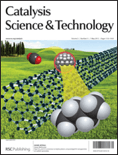
Catalysis Science & Technology
Scope & Guideline
Fostering Collaboration in Catalytic Research
Introduction
Aims and Scopes
- Catalyst Design and Synthesis:
The journal explores innovative methods for designing and synthesizing new catalysts, including metal-organic frameworks (MOFs), nanostructured materials, and hybrid systems that enhance catalytic performance. - Mechanistic Studies:
A significant focus on understanding the fundamental mechanisms of catalytic processes through experimental and computational studies, including DFT calculations and in situ characterization techniques. - Environmental and Energy Applications:
Research on catalysts for environmental remediation, such as photocatalytic degradation of pollutants and CO2 reduction, as well as catalysts for renewable energy applications, including hydrogen production and biomass conversion. - Heterogeneous and Homogeneous Catalysis:
The journal publishes studies on both heterogeneous and homogeneous catalytic systems, investigating their performance, selectivity, and stability under various reaction conditions. - Machine Learning and Data-Driven Approaches:
An increasing emphasis on the application of machine learning and data analytics to optimize catalyst design and predict catalytic performance.
Trending and Emerging
- Sustainable and Green Catalysis:
There is a growing emphasis on developing catalysts that facilitate sustainable processes, including renewable feedstocks, waste valorization, and energy-efficient reactions. - Photocatalysis and Photoelectrocatalysis:
Research into photocatalytic systems that harness solar energy for chemical transformations is on the rise, with a focus on visible-light-driven reactions for CO2 reduction and pollutant degradation. - Electrocatalysis:
Electrocatalytic processes, particularly for CO2 reduction and hydrogen evolution, are increasingly prominent, driven by the need for renewable energy solutions and energy storage technologies. - Bimetallic and Alloy Catalysts:
The exploration of bimetallic and alloy catalysts is gaining popularity due to their potential for enhanced catalytic activity and selectivity through synergistic effects. - Machine Learning in Catalysis:
The integration of machine learning and artificial intelligence into catalyst discovery and optimization processes is emerging as a significant trend, streamlining research and development efforts.
Declining or Waning
- Traditional Catalyst Characterization Methods:
There has been a noticeable decrease in the publication of studies solely focused on conventional characterization techniques (e.g., XRD, BET surface area measurements) without integrating advanced methodologies or novel insights. - Single-Use Catalysts:
Research on single-use or disposable catalysts has waned as the field moves towards sustainability and the development of catalysts that can be reused or regenerated. - Bulk Catalysis:
The focus on bulk catalysis processes has diminished, with a shift towards more complex, multi-functional systems that offer enhanced selectivity and efficiency. - Classic Organometallic Catalysis:
While still relevant, traditional studies on organometallic catalysts are being overshadowed by the exploration of more sustainable, non-noble metal catalysts and biocatalysts. - Basic Academic Reviews:
The frequency of basic review articles covering well-established catalytic processes has declined, as the journal leans more towards cutting-edge research and novel findings.
Similar Journals

APPLIED CATALYSIS A-GENERAL
Pioneering the Future of Catalysis Research.Applied Catalysis A-General is a premier journal published by Elsevier that serves as a vital resource in the fields of catalysis, process chemistry, and technology. Founded in 1991, this esteemed journal has garnered considerable recognition, reflected in its classification in the Q2 quartile for both catalysis and process chemistry in 2023, as well as its notable rankings within the Scopus database, placing it among the top 20 journals in related disciplines. With an ISSN of 0926-860X and an E-ISSN of 1873-3875, the journal provides a platform for researchers and professionals to disseminate cutting-edge research findings, facilitate knowledge transfer, and foster innovation in the field. While not an open-access journal, it remains accessible through institutional subscriptions, ensuring that critical findings reach a broad audience. The journal's objectives include advancing the understanding of catalytic processes and their applications, making it an indispensable tool for those engaged in this dynamic area of study. Applied Catalysis A-General continues to play a vital role in shaping the future of catalysis, contributing to both scientific progression and practical advancements in various industries.
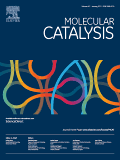
Molecular Catalysis
Elevating the Science of Catalysis for AllMolecular Catalysis, published by Elsevier in Netherlands, is a premier academic journal that explores the cutting-edge domain of catalytic science. With an impressive impact factor and classified in the top quartiles (Q2) in various fields such as Catalysis, Physical and Theoretical Chemistry, and Process Chemistry and Technology, this journal stands as a significant resource for researchers and professionals committed to advancing the understanding of catalysis processes. Since its inception in 2017, it has been pivotal in publishing high-quality, peer-reviewed research that addresses crucial challenges and innovations in molecular catalysis. The journal is fully Open Access, allowing unrestricted access to its articles, thus fostering a wider dissemination of knowledge. Recognized for its rigorous editorial standards, it features works that push the boundaries of current scientific understanding, making it an essential platform for students and academics alike to share and grow in their expertise.

Catalysts
Transforming Ideas into Catalytic BreakthroughsCatalysts is a leading academic journal in the field of catalysis, published by MDPI since 2011 and well-regarded for its commitment to open access publishing. Based in Switzerland, this journal delivers innovative research and reviews that span various aspects of catalysis, from heterogeneous and homogeneous catalysis to the development of novel catalytic systems. With a commendable impact factor and a notable Q2 ranking in both Catalysis and Physical and Theoretical Chemistry categories, Catalysts plays a critical role in advancing the scientific discourse in these fields. The open-access model ensures that all research articles are readily accessible to researchers and professionals worldwide, fostering collaboration and accessibility to high-quality scientific literature. As the journal continues to publish cutting-edge studies up to its convergence in 2024, it remains an essential resource for anyone involved in catalysis research, from seasoned professionals to emerging scholars.
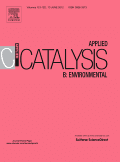
Applied Catalysis B-Environment and Energy
Advancing sustainable solutions for a greener tomorrow.Applied Catalysis B-Environment and Energy, published by Elsevier, is a leading journal in the fields of catalysis, environmental science, and process chemistry, with an impressive impact factor that reflects its significance in advancing research and innovation. Established in 1992, this esteemed journal has earned a prestigious status as evidenced by its 2023 category quartiles—ranking in the Q1 category for Catalysis, Environmental Science, and Process Chemistry and Technology. With consistently high rankings in the Scopus database, it holds a remarkable position as #1 in General Environmental Science and #2 in both Process Chemistry and Catalysis, showcasing its profound impact on the respective fields. The journal’s scope encompasses both theoretical and practical research, targeting the pivotal developments in catalysis that promote sustainable practices and energy efficiency. Researchers, professionals, and students alike will find invaluable insights and cutting-edge studies published within its pages, making it an essential resource for those invested in pioneering advancements for a greener, more energy-efficient future.
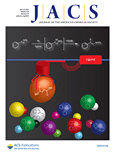
Journal of the American Chemical Society
Fostering Excellence in Chemistry for Over a CenturyJournal of the American Chemical Society (JACS), published by the American Chemical Society, stands as a pivotal publication in the field of chemistry, facilitating the dissemination of significant research findings since its inception in 1879. With an impressive impact factor and esteemed rankings placing it in the Q1 quartile across various categories—including Biochemistry, Catalysis, and Colloid and Surface Chemistry—JACS continues to serve as a vital resource for scientists, professionals, and students alike. Researchers choose JACS for its rigorous peer-review process, ensuring high-quality content that shapes the landscape of modern chemistry. The journal's extensive scope encompasses pivotal advancements and innovative methodologies, reflecting the evolving dynamics of chemical research. With access options being traditional subscription-based, it remains crucial for institutions and individuals to engage with its latest issues to stay at the forefront of chemical science advancement.

ACS Organic & Inorganic Au
Exploring the Intersection of Organic and Inorganic ChemistryACS Organic & Inorganic Au, published by the American Chemical Society, stands as a premier open-access journal dedicated to advancing the fields of organic and inorganic chemistry. Since its inception in 2021, this journal has swiftly risen to prominence, achieving a commendable Q1 classification in Inorganic Chemistry, Organic Chemistry, and Physical and Theoretical Chemistry as of 2023. With an ISSN of 2694-247X, it provides a vital platform for researchers, professionals, and students to disseminate their findings and engage with cutting-edge work across converged disciplines. Operating from its headquarters in Washington, DC, ACS Organic & Inorganic Au is committed to fostering a collaborative research environment, encouraging rigorous peer review, and ensuring the wide accessibility of high-quality scholarly articles. With its open-access model, readers worldwide can freely access and utilize research findings, promoting a global exchange of knowledge crucial for driving innovation in chemistry.
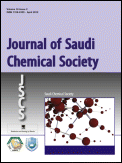
Journal of Saudi Chemical Society
Unveiling the Future of Chemistry with Every Publication.The Journal of Saudi Chemical Society, published by ELSEVIER, stands as a premier platform for advancing knowledge in the field of chemistry. Since its inception in 2009, this Open Access journal has garnered significant attention, securing a prestigious Q1 ranking in the Chemistry (miscellaneous) category for 2023, reflecting its position among the top journals in the discipline. With an impressive Scopus ranking of #66 out of 408 in General Chemistry, this journal boasts a commendable 83rd percentile, underscoring its impact and relevance in the global research community. The journal aims to disseminate high-quality research articles, reviews, and case studies, fostering innovation and collaboration among chemists and allied professionals. By enabling widespread access to cutting-edge research, the Journal of Saudi Chemical Society plays a crucial role in supporting the educational and professional development of students, researchers, and practitioners alike, making it an essential resource for anyone invested in the dynamic field of chemistry.

International Journal of Chemical Engineering
Transforming ideas into impactful chemical solutions.International Journal of Chemical Engineering is a leading peer-reviewed journal published by HINDAWI LTD, dedicated to advancing the field of chemical engineering through innovative research and practical applications. With an impact factor that places it in the Q2 category of Chemical Engineering (miscellaneous), this journal has established itself as a significant resource for researchers and professionals alike, particularly those interested in general chemical engineering topics. Since its transition to Open Access in 2008, the journal has ensured that critical scientific knowledge remains accessible to a global audience, fostering collaboration and interdisciplinary research. With coverage from 2009 to 2024, it continues to be an essential platform for disseminating cutting-edge findings, methodologies, and discussions that shape the future of chemical engineering. For more information, visit their website or access the latest issue directly to explore groundbreaking studies and insights.
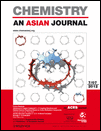
Chemistry-An Asian Journal
Advancing Knowledge Through Innovative Discoveries.Chemistry-An Asian Journal is a premier academic publication in the field of chemistry, published by WILEY-V C H VERLAG GMBH in the United Kingdom. With an impressive track record since its inception in 2006, this journal has established itself as a leading platform for high-quality research, effectively bridging the gap between fundamental and applied chemistry. The journal is currently ranked in the Q2 category for Biochemistry and Q1 in both Chemistry (miscellaneous) and Organic Chemistry as of 2023, reflecting its significant impact and relevance in the scientific community. According to Scopus metrics, it stands at a commendable rank of #92 out of 408 in General Chemistry, showcasing its influence and reach among researchers. Although not an open-access journal, it offers a wealth of subscription options, allowing access to cutting-edge research articles and reviews that cater to both seasoned professionals and new entrants to the field. By publishing innovative findings and fostering discussions on contemporary issues in chemistry, Chemistry-An Asian Journal remains a vital resource for advancing knowledge and facilitating collaboration among scientists globally.
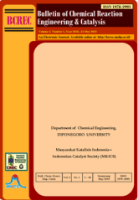
Bulletin of Chemical Reaction Engineering and Catalysis
Showcasing Transformative Insights in Chemical Reaction EngineeringBulletin of Chemical Reaction Engineering and Catalysis is a distinguished open-access journal published by UNIV DIPONEGORO, focusing on pivotal advancements in the fields of chemical reaction engineering and catalysis. Since its inception in 2008, this journal has served as a vital platform for disseminating cutting-edge research, catering to a diverse readership that includes researchers, professionals, and students in chemical engineering and related disciplines. With its dedication to publishing valuable insights, the journal has been indexed in Scopus and boasts respectable rankings across various categories, including Q3 in Chemical Engineering (miscellaneous) and Q4 in Catalysis as of 2023. It continues to foster scholarly dialogue and collaboration by providing an accessible means for contributors to share their findings. Operating from Semarang, Indonesia, this journal underscores its commitment to advancing knowledge in chemical sciences, making it an essential resource for those engaged in the study and application of chemical processes.